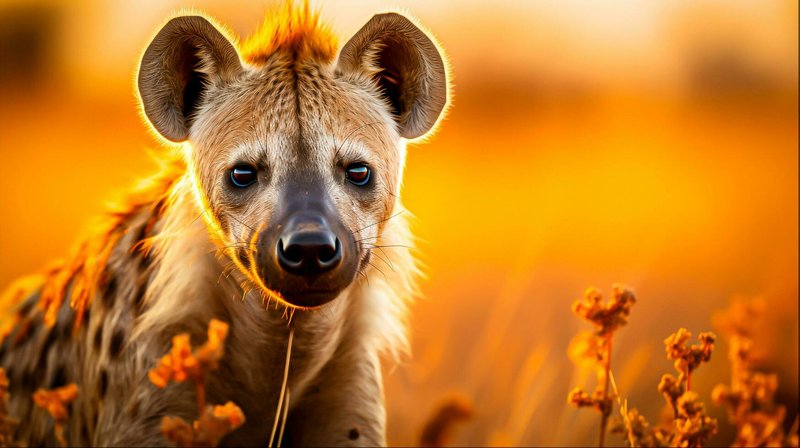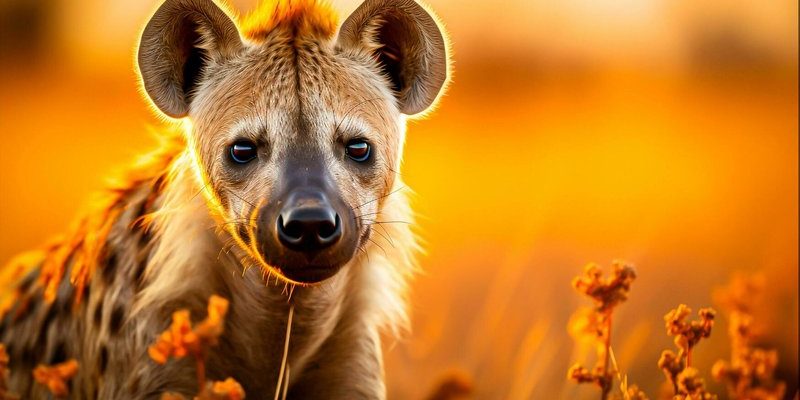
Hyaenas, often misunderstood, are part of a diverse and complex family tree. They belong to the order Carnivora, which includes all sorts of meat-eating mammals. Their evolutionary journey is packed with twists and turns that reveal not only their ability to adapt but also the changing landscapes they’ve navigated through eons. So, grab your favorite beverage, and let’s unravel the captivating story of hyaenas.
Understanding Hyaenas: A Brief Overview
Hyaenas are intriguing creatures that belong to the family Hyaenidae. There are four main species: the spotted hyaena, the striped hyaena, the brown hyaena, and the aardwolf. Each species has its own unique traits and behaviors, but they all share some common characteristics. For example, they are known for their strong jaws, which allow them to crush bones and consume almost every part of their prey.
You might be surprised to learn that hyaenas are more closely related to cats than dogs. This connection stems from their evolutionary history, which started millions of years ago. From their unique social structures to their specialized hunting techniques, hyaenas are worth studying and respecting for their adaptability in the wild.
The Early Ancestors of Hyaenas
The story of hyaenas begins over 20 million years ago, in the Miocene epoch, when the first members of the family Hyaenidae emerged. These early ancestors were quite different from the hyaenas we know today. Initially, they resembled small, dog-like creatures that roamed the landscapes of what is now Europe, Africa, and Asia.
During this time, the climate and environment were undergoing significant changes. The expansion of grasslands and reduction of forests forced many animals to adapt to new hunting and scavenging strategies. This change in habitat played a crucial role in shaping the hyaena’s early development. Over time, natural selection favored those that could effectively exploit these new resources, paving the way for the hyaenas we see today.
The Rise of the Modern Hyaena
Fast forward a few million years, and we begin to see the evolution of *modern hyaenas*. The first true hyaenas emerged in the late Miocene, around 10 million years ago. Among these was the well-known genus *Crocuta*, which includes the spotted hyaena. This species showcases remarkable social behavior, living in clans that can include up to 80 members. Their complex social structure is a significant factor in their hunting success and survival rates.
Spotted hyaenas are highly intelligent and display fascinating communication skills, using vocalizations and body language to coordinate their activities within the clan. As they evolved, hyaenas developed a unique mix of scavenging and hunting skills, which helped them thrive in diverse habitats. This adaptability allowed them to become one of the top predators in their ecosystems.
Hyaenas in the Fossil Record
The *fossil record* is a treasure trove for understanding the evolutionary history of hyaenas. From ancient bones and teeth, scientists have gathered valuable information about their size, diet, and environmental adaptations. For instance, fossils show that some ancient hyaenas were much larger than today’s species, indicating they had different ecological roles.
One notable find is the *giant hyaena*, which lived in Europe during the Pleistocene epoch, about 1.5 million years ago. This formidable predator was about the size of a lion and had powerful jaws capable of crushing bones. The discovery of such fossils tells us a lot about how hyaenas adapted to changing climates and prey availability over time.
Hyaenas and Their Role in Ecosystems
Hyaenas play a critical role in their ecosystems, acting as both hunters and scavengers. Their scavenging habits allow them to help recycle nutrients back into the environment. By consuming leftover carcasses, they prevent the spread of disease and help maintain a healthy ecosystem.
Their role as predators can’t be overlooked, either. Spotted hyaenas, for example, often hunt in packs, employing clever strategies to take down prey much larger than themselves. This dynamic adds balance to the food web and ensures that animal populations remain healthy.
Here’s the thing: the evolution of hyaenas shows us the intricate connections between species and their environments. As conditions change, each creature must adapt, and hyaenas exemplify this struggle and success.
Current Threats and Conservation Efforts
Unfortunately, modern hyaenas face numerous threats that jeopardize their survival. Habitat loss due to agriculture, urban development, and climate change diminishes their range and food sources. Additionally, persecution by humans, often fueled by misunderstandings about their behavior, contributes to declining populations.
Conservation efforts are critical to ensure the future of hyaenas. Organizations work to protect their habitats, educate the public about the importance of these animals, and promote coexistence. By fostering awareness and implementing effective conservation strategies, we can help secure a brighter future for hyaenas and the ecosystems they inhabit.
Why Understanding Hyaenas Matters
Understanding the *evolutionary history of the hyaena* is more than just an academic exercise; it’s essential for grasping the interconnections in nature. By appreciating these fascinating creatures, we can learn valuable lessons about adaptation, survival, and the delicate balance of ecosystems.
When we take the time to learn about hyaenas, we also gain insight into our own relationship with the natural world. These animals remind us that every species plays a role, and protecting biodiversity is crucial for the health of our planet.
In conclusion, the journey through the evolutionary history of hyaenas is one filled with intrigue and complexity. From their ancient ancestors to their modern-day adaptations, these remarkable creatures have a story worth telling. By recognizing their importance and challenges, we can better appreciate the world around us and our place within it.

